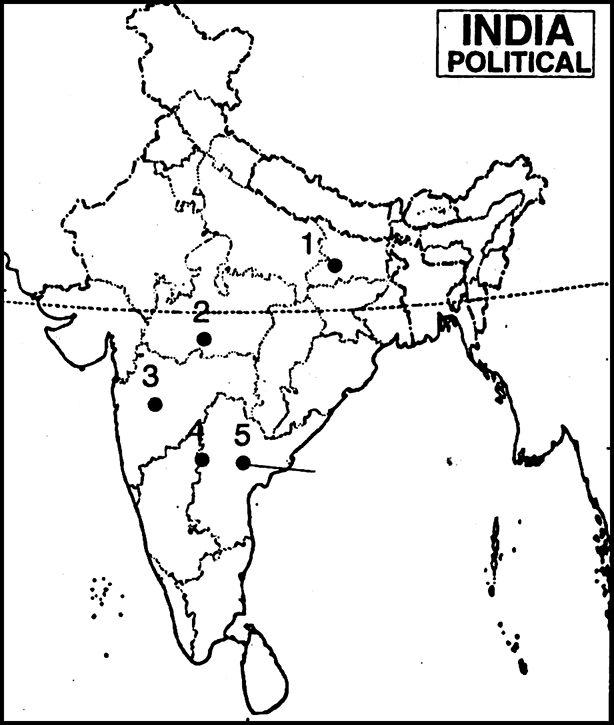On the given political outline map of India, five Buddhist sites are marked as 1 to 5. Identify them and write the names on the lines marked near them.
1. Lumbini, 2. Sanchi, 3. Karle, 4. Nagarjunakonda, 5. Amaravati.
On the given political outline map of India mark and label the following kingdoms and towns: Satavahanas, Cholas, Ujjayini, Rajgir, Mathura.

The anguish of the king
When the king Devanampiya Piyadassi had been ruling for eight years, the (country of the) Kalingas (present day coastal Orissa) was conquered by (him).
One hundred and fifty thousand men were deported, a hundred thousand were killed, and many more died.
After that, now that (the country of ) the Kalingas has been taken, Devanampiya (is devoted) to an intense study of Dhamma, to the love of Dhamma, and to instructing (the people) in Dhamma.
This is the repentance of Devanampiya on account of his conquest of the (country of the ) Kalingas.
For this is considered very painful and deplorable by Devanampiya that, while one is conquering an unconquered (country) slaughter, death and deportation of people (take place) there...
A. Who was called, ‘Devanampiya Piyadassi? Give his brief description.
B. Mention the importance and limitations of inscriptions.
C. Explain the effects of war of Kalinga on Ashoka.
D. Why did the king repent after the war of Kalinga?
What the king’s officials did?
Here is an excerpt from the account of Megasthenes:
Of the great officers of state, some ... superintend the rivers, measure the land, as is done in Egypt, and inspect the sluices by which water is let out from the main canals into their branches, so that every one may have an equal supply of it. The same persons have charge also of the huntsmen, and are entrusted with the power of rewarding or punishing them according to their deserts. They collect the taxes, and superintend the occupations connected with land; as those of the woodcutters, the carpenters, the blacksmiths and the miners.In praise of Samudragupta
[This is an excerpt from the Prayaga Prashasti]
He was without an antagonist on earth; he, by the overflowing of the multitude of (his) many good qualities adorned by hundreds of good actions, has wiped off the fame of other kings with the soles of (his) feet; (he is) Purusha (the Supreme Being), being the cause of the prosperity of the good and the destruction of the bad (he is) incomprehensible; (he is) one whose tender heart can be captured only by devotion and humility; (he is) possessed of compassion; (he is) the giver of many hundred thousands of cows; (his) mind has received ceremonial initiation for the uplift of the miserable, the poor, the forlorn and the suffering; (he is) resplendent and embodied kindness to mankind; (he is) equal to (the gods) Kubera (the god of wealth), Varuna (the god of the ocean), Indra (the god of rains) and Yama (the god of death)...